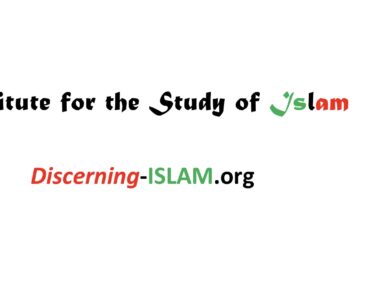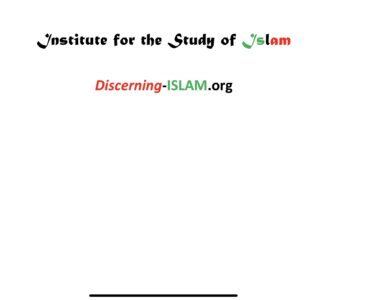
Conversion
In one of the first divine revelations recorded in the Qurʿān, the prophet Muḥammad was commanded by Allah to “arise and warn!” (74:1). This is taken by some Muslim scholars to signal the beginning of public preaching of the message, which until then was presumably done privately among the Prophet ’s family and intimate friends. Hence, almost from the very outset, Islam was to be a proselytizing faith with a mission to bring its message to all who would listen. In another passage in the Qurʿān Muḥammad was told, “Invite to the way of your Lord with wisdom and beautiful preaching; and argue with them in ways that are best and most gracious” (16:125).
At first, however, most members of the community of Mecca in which Muḥammad lived and to which he brought this message tended to reject it for social, religious, and economic reasons. With his migration to Medina in 622 CE, together with his small community of converts, and the acceptance he found there for his message, a strong base was established for the spread of that word and the conversion of most of Arabia. As the message spread through conquest beyond the borders of the Arabian Peninsula, the greater community of new Muslims, at first still largely of Arabian stock, found it difficult to integrate non-Arabian outsiders into its traditional social structure. Acceptance of Islam at that time meant integration into the existing tribal framework of Arabian society. This concept changed slowly under the influence of the very different societies that fell under Muslim sway. Within a relatively short time, as large numbers chose or were forced to join the community, conversion and converts found a place in Islamic society and ideology.
The Concept Of Conversion
In common English usage, conversion means “to turn around, transform, bring over or persuade to a particular view, change or turn from one state to another.” This definition, referring to an inner change or transformation, flows from a Christian concept of conversion. It is barely applicable to religious traditions like Judaism and Islam that emphasize the observance of a divine law and of socially validated acts as well as matters of belief. Until modern times, when contact with Christian missionaries introduced their concept of conversion, the Arabic lexicon lacked any precise equivalent of this term. This was so, first of all, because in the Islamic tradition entrance into the religious community is viewed less as an inner transformation than as a divinely determined return to fiṭrah, the natural disposition or condition in which all humanity is born but which may have been altered by one ’s parents. Indeed, the Qurʿān states, “Whomsoever it is God ’s will to guide, he expands his bosom to Submission (Islām)” (6:126).
The act of becoming a Muslim differs from conversion to Christianity above all because to enter Islam is literally to perform the act of surrender or submission to God and God ’s will; it also involves tawbah (return or repentance) to the fiṭrah, humanity ’s natural disposition. Hence the word islām itself means “submission”; from the same Arabic root come the verbal forms aslama and istaslama, denoting the act of becoming a muslim, literally, “one who submits or surrenders” and professes that surrender by adhering to the Prophet ’s message.
This act of submission to God consists first and foremost in tawḥīd or proclaiming the absolute oneness and uniqueness of God; shirk, the cardinal sin in Islam, is the association by comparison of anything with God. In traditional interpretations this includes ascribing to any human being or any aspect of nature powers that belong to God alone. Submission simultaneously involves bearing witness that Muḥammad is the messenger and prophet of God. From these follow the observance of what God commands, as revealed to the prophet Muḥammad (e.g., prayer and almsgiving), and avoidance of what is forbidden (e.g., eating pork and drinking wine). In Muslim tradition this raises the issue of the distinction between islām and īmān, the latter translated as “faith” or “belief.”
When the Prophet was asked, according to several traditions, to clarify the distinction between the two, he said that islām consists of “worshiping God, not associating anything with Him, carrying out the prayers, giving the prescribed alms, and fasting during the month of Ramadan.” These came to be formalized as the Five Pillars of Islam:
- the confession of faith;
- prayer preceded by ritual cleansing and involving prescribed actions;
- almsgiving in a specified amount and manner;
- fasting during the month of Ramaḍan; and,
- at least once in a lifetime, pilgrimage to Mecca.
But he added to these aspects of islām, khayrāt or ṣāliḥāt (good works), saying “to give food (to the hungry), and to greet with peace those one knows and those one does not know.”
The standard presentation of īmān, on the other hand, came to consist of belief in God, his angels, his revealed books (including the original revelations recorded in the scriptures of the Jews and Christians), his messengers or apostles, the day of resurrection, and fate or destiny. By way of distinction, therefore, islām consists of the performance of the Five Pillars, specified acts in a social environment; later īmān or faith consists of certain beliefs, as outlined above. This set of beliefs came to be elaborated in several creeds composed during the ninth and tenth centuries (third and fourth centuries). Whereas īmān resides in the heart and may be known only by God, the acts of islām should be witnessed by humanity. Muslim scholars have differed over the relationship between islām and īmān, but one definition in a tenth-century creed states, “There is no faith whatsoever without islām, and islām could not exist without faith (īmān).”
Approaches Toward Non-Muslims
As the early, rapid conquest of large areas of the Near East and North Africa laid the basis for a vast empire ruled by Muslims, varying approaches were taken toward nonbelievers, first in Arabia and then in the two great empires between which the peninsula was situated. In this early period, the question of conversion depended largely on the attitudes of the military commanders of the various Muslim units. The Sassanian Persian Empire, which ruled over today ’s Iraq, Iran, and most of Central Asia, was rapidly conquered in its entirety. The adherents of the existing state religion, Zoroastrianism, and its various offshoots were rather rapidly converted to Islam, and it is estimated that Islam became the majority religion by the tenth century. Only small remnants of the once-powerful Zoroastrians and of the Christian and Jewish minorities survive there now. By contrast, in the portions of the Byzantine Empire that were conquered, different conditions prevailed in the various provinces. Here the official Greek Orthodox church was challenged by a variety of Eastern Christian churches, and there were widespread Jewish communities as well. The Syro-Palestinian area is said by some Western scholars to have become a majority-Muslim area only after the Crusades, and Egypt only somewhat later. The Christian population in North Africa converted completely much more rapidly, and there were no native Christian communities there in the Middle Ages, in contrast to the North African Jewish minority communities, which survived until modern times.
Based on concepts derived from the Qurʿān and the traditions attributed to the Prophet, society in the new Islamic empire came to be divided between two main groups of subjects, the believers and the other people of the book — those who possessed sacred scriptures, at first Jews, Christians, and Zoroastrians. These became the so-called “protected peoples” (dhimmī). They were guaranteed protection of life and property and the freedom to practice their own religion and administer its laws, but they were subject to certain restrictions, among them the payment of special taxes (largely limited to the jizyah or poll tax) and the observance of sumptuary laws. These were laws governing personal behavior, including the wearing of distinguishing garments; prohibition from riding horses, bearing arms, or building edifices higher than those of Muslims; regulation of public religious practice; and the like. The acceptance of dhimmah was thus accompanied by second-class status and formalized acts of degradation; the latter were enforced or ignored depending on the ruler of the time or the power of the Muslim religious authorities in the various Islamic states that arose after the collapse of imperial power.
Although differing in details from one locality to another, the process of conversion has come to be more or less standardized. The act of becoming a Muslim begins with the first of the Five Pillars, the recitation in the presence of witnesses of the shahādah, the Confession or Profession of Faith: “I bear witness that there is no god but God, and Muḥammad is the messenger of God.” The performance of the other Pillars, also presumably in public, is expected to follow. In addition, although not originally mentioned in the Qurʿān, circumcision (khitān) came to be seen as an essential requirement for a male convert. The prophetic tradition mentions it as a part of the fiṭrah, connecting it with the life of Abraham. In some areas of the world, especially among the uneducated masses, male circumcision came to be recognized as a sign of being a Muslim and indeed to signify the act of entering into Islam. Adoption of what came to be considered Muslim names and of specifically Muslim types of dress, especially the modest attire required of women, were also expected in order to differentiate the convert from former coreligionists. Ceasing to eat pork and to drink alcoholic beverages also came to be considered symbolic breaks with the past.
Motivations For Conversion
As indicated above, the rate of conversion varied greatly from one area of the empire to another — rapid in some and almost glacial in others. Although the disappearance of pagan religions in areas conquered by Islam has been little investigated, there has been considerable scholarly discussion about the causes for the transformation of once predominantly Christian and Zoroastrian areas, with relatively large Jewish minority communities, into largely Muslim ones. The thoroughness of the process cannot be laid to the use of force or threats of death, although these did occur at times, but rather to a variety of factors. Some of these were economic, often including quite significant differential taxation, certain trade advantages in specific places, and prohibitions against the ownership of land or slaves by non-Muslims. Many high officials in the government, who had been chosen to serve as viziers, secretaries of finance or the chancery, or accountants, could advance their careers by converting or stave off retribution resulting from popular resentment against them on account of their tremendous wealth or power. Then there were social motives: intermarriage involving a male dhimmī and a Muslim woman, an otherwise forbidden act; the ability to retain high social standing or to rise from a lower one; or the advantages of belonging to the ruling, majority group. Although some Muslim jurists forbade a Muslim man from putting pressure on his Jewish or Christian wife to convert, such unions occasionally also resulted in conversion. Also significant for conversion were considerations of inheritance, for a newly converted Muslim ’s Jewish or Christian relatives could not inherit from him, but many jurists would allow him to inherit from them. One also gained legal advantages in court battles, since the testimony of a Jew or Christian could not stand against the testimony of a Muslim, while a Muslim ’s counter-testimony would effectively thwart an accusation that did not have sufficient additional evidence. Finally, there were spiritual reasons such as genuine respect for and attraction to Islamic teachings and practice. The economic and social aspects seemed to dominate during the earlier periods, as Islamic theological and philosophical thought developed sophistication during periods of free intellectual intercourse among scholars of the different faiths in early ʿAbbāsid Baghdad or at the peak of Umayyad rule in Spain. Later, when Ṣūfī ideas and practices spread, these seem to have become very attractive throughout non-Muslim populations of the Islamic realm. One example of this trend may be seen in the circle of Jewish intellectuals around Abraham ben Moses ben Maimon (1186–1237), the grandson of the great Jewish philosopher Maimonides. Although he himself remained a Jew and tried unsuccessfully to introduce Muslim, especially Ṣūfī, practices into Judaism, some of his companions converted to Islam.
There were infrequent instances of forced conversion in various parts of the empire at different times, for instance during the reigns of the mad caliph al-Ḥakīm (r. 996–1021) in Egypt and of the fanatical Almohads in Spain and Morocco (1130–1269), when the choice was indeed conversion, exile, or death. Aside from forced conversion, there were relatively large numbers of converts in the face of the stringent enforcement of discriminatory laws during the reigns of certain Mamlūk sultans (1260–1517) in Egypt and Syria, as well as severe persecution under the early Ṣafavid rulers in Iran (1501–1722). These were, however, exceptions. In other cases, large populations converted to Islam en masse without force. From the early-tenth-century travel account of Ibn Faḍlān we know that the Bulgar king of the central Volga region converted to Islam along with his people primarily for political reasons, to seal an alliance with the ʿAbbāsid caliphs and gain power against his local enemies. Scholarly opinion now generally holds that Muslims reached majority status in the empire as a whole only by the tenth century, and in certain areas, such as Egypt, as mentioned above, some centuries later.
Proselytization, usually termed daʿwah, literally “call” or “invitation” in Islamic contexts, has been an important activity in Islamic history, ranging from individual efforts to the tightly organized hierarchical missionary organization, termed “the daʿwah,” of the Fāṭimids, who adhered to Ismāʿīlī Shi’ism. Since the ninth century in central Asia, and later in other regions such as Anatolia, the Balkans, India, sub-Saharan Africa, Indonesia, and elsewhere, conversion to Islam has been carried out to a great extent through the activities of traveling merchants, mendicant Ṣūfīs, and Muslim popular preachers, as has been the case in parts of Indonesia and other areas of East Asia and Africa. More recently, other factors have emerged that aid in the spread of Islam. Some of these have resulted from efforts to counter Christian missionary activity, especially in sub-Saharan Africa where Christianity and Islam have engaged in fierce competition for converts. Others flow from the rise of actively proselytizing groups within Islam, such as the Aḥmadīyah sect that has been quite active in Europe and the Americas, leading to activities by other Muslim groups to counter their successes. In many cases, those converted by Ṣūfī masters or Ismāʿīlī dāʿīs (propagandists) were brought into the fold by stages that included creative mixtures of Islamic theology and ritual with those of the converts ’ original traditions. Thus, for example, the Nizārī Ismāʿīlī pirs who converted large numbers of Hindus in Sind and Gujarat explained the Shīʿī theory of the imamate in a Hindu framework, presenting the Nizārī imam as the awaited savior, one of the avatars of the Hindu god Vishnu. Ṣūfī masters in Anatolia and Central Asia often promoted a form of Islam that drew on shamanistic traditions and practices, including taking omens from animals and the natural world.
An especially impressive development has been the spread of Islam among African-Americans in recent decades. This movement first arose early in the twentieth century and evolved into many subgroups, each following the teachings of a different charismatic leader, and each deviating in important ways from “normative” Islam. These movements generally accepted the idea that Islam was the original religion of their ancestors before they were brought as slaves to America; their thought was permeated by anti-colonialism and antiracism that often led to strong anti-white theories and attitudes. Christianity as a religion has been portrayed as racist, as a “white man ’s religion,” and as an agent of colonialism. Only after the death of Elijah Muhammad, the leader of the Nation of Islam, one of the largest and most important of these movements, did the majority turn toward Sunnī Islam with its teachings of racial harmony. This part of the movement is now accepted in the larger Muslim world and has gained momentum with an active program of proselytizing. Today Muslims of all groups, Sunnīs as well as remnants of a variety of sects of American origin, make up an important minority within the African-American community.
The recent large-scale emigration of Muslims from their homelands to Europe and the Americas for economic and political reasons is dramatically changing the demographic distribution of Muslims in majority-Christian areas of western Europe and the United States. This emigration to the West has resulted, among other things, in the establishment of Muslim mosques, schools, and publishing houses where these did not exist previously and has led to considerable missionary activity in those areas. Thanks The more than 1.5 million Turks in Germany, the several million North Africans and other Muslims in France, and the hundreds of thousands of Pakistanis, Indians, and other Muslims in Britain are matched by the relatively recent influx of Muslim immigrants to the United States, joined with converts to Islam among native-born African-Americans. It is estimated that there are now between 3 and 6 million Muslims in the United States, among whom between 500,000 and 1 million are African-Americans.
Conversion From Islam And Intra-Islamic Conversion
Conversion from Islam is often overlooked, as Islamic law forbids it and many Muslims are unaware that it ever occurs. Apostasy (riddah or irtidād) causes one to lose all one ’s rights and is punishable by death. It is partly for this reason that the percentage of Muslims in the various regions of the Islamic empire gradually increased and seldom decreased. Nevertheless, there have been many important cases of conversion of Muslims to Christianity, particularly where Christian powers conquered territory formerly under Muslim rule, as in Sicily, Spain and Portugal, and the Balkans. In all of these cases, many local Muslims fled to other regions or held on to their faith for generations, practicing dissimulation (taqīyah), but many also ended up leaving the faith and assimilating. In Spain, despite forced conversions and baptisms in 1501 and 1526 and repressive measures against Islamic practices throughout the sixteenth century, many of the Moriscos retained their Muslim identity through dissimulation. Yet if nearly 300,000 Moriscos left Spain in the final expulsions of 1609–1614, one suspects that those who converted to Christianity were even more numerous. Conversion from Islam is still outlawed in many nations in the Islamic world, and Muslims who do convert often do so at great risk.
There have also been many historical cases of conversion from Sunnī to Shīʿī Islam and vice versa. The ninth and tenth centuries witnessed an unprecedented surge in the Middle East of Shīʿī powers, including the Qarāmiṭah in Iraq and eastern Arabia; the Fāṭimids in Egypt, the Hejaz, and Syria; the Ḥamdanids in northern Syria; and the Būyids in Iran and Iraq. Their political power and patronage resulted in the conversion of large numbers of Sunnī Muslims to Shīʿī Islam. This trend was reversed in the eleventh and following centuries, when the Seljuks, Zangids, Ayyūbids, and Mamlūks conquered the territory formerly ruled by Shīʿī powers and actively campaigned against the presence of Shīʿī ideology in the public sphere, burning Shīʿī books, outlawing the distinctive Shīʿī call to prayer and the celebration of the Shīʿī holy days of ʿĀshūrāʿ (10 Muḥarram; the anniversary of the martyrdom of Ḥusayn, the Prophet ’s grandson, at Karbala in southern Iraq) and ʿĪd al-Ghadīr (18 Dhu al-Ḥijjah; the commemoration of the Prophet Muḥammad ’s pledge of support to ʿAlī, understood by Shīʿah to be the explicit designation of ʿAlī as his successor as leader of the Muslim community). These conversions radically changed the religious landscape of the Middle East. For centuries, there have been no native Shīʿa in Egypt, once home to many Shīʿa both before and during the Fāṭimid period (969–1171). The Shīʿī communities in Syria were drastically reduced and receded from major cities such as Aleppo, where they once had a very strong presence, to mountainous regions such as Jabal ʿĀmil in what is now southern Lebanon. Another spectacular case of intra-Islamic conversion was instigated by the adoption of Twelver Islam as the state religion by the Ṣafavid dynasty. As a result, the Shīʿī population in Iran increased from 20 percent to nearly 90 percent by the beginning of the twenty-first century. The presence of the Shīʿī shrines in southern Iraq and the settlement of nomads in the region also resulted in a significant conversion of Sunnī Arab tribes in the nineteenth century.
Contemporary conversionary approaches in the West are generally irenic in tone, tending to stress the fulfillment of the teachings of Judaism and Christianity in the message of Muḥammad. This implies the acceptance of Muḥammad as the last of the line of prophets previously sent by God to those religions — biblical figures such as Abraham, Moses, and Jesus, who are revered as prophets in Islam. It also demands recognition of the authenticity of Muḥammad ’s message as a divine revelation.
Conversion
421 – 001
https://discerning-Islam.org
Last Update: 03/2021




